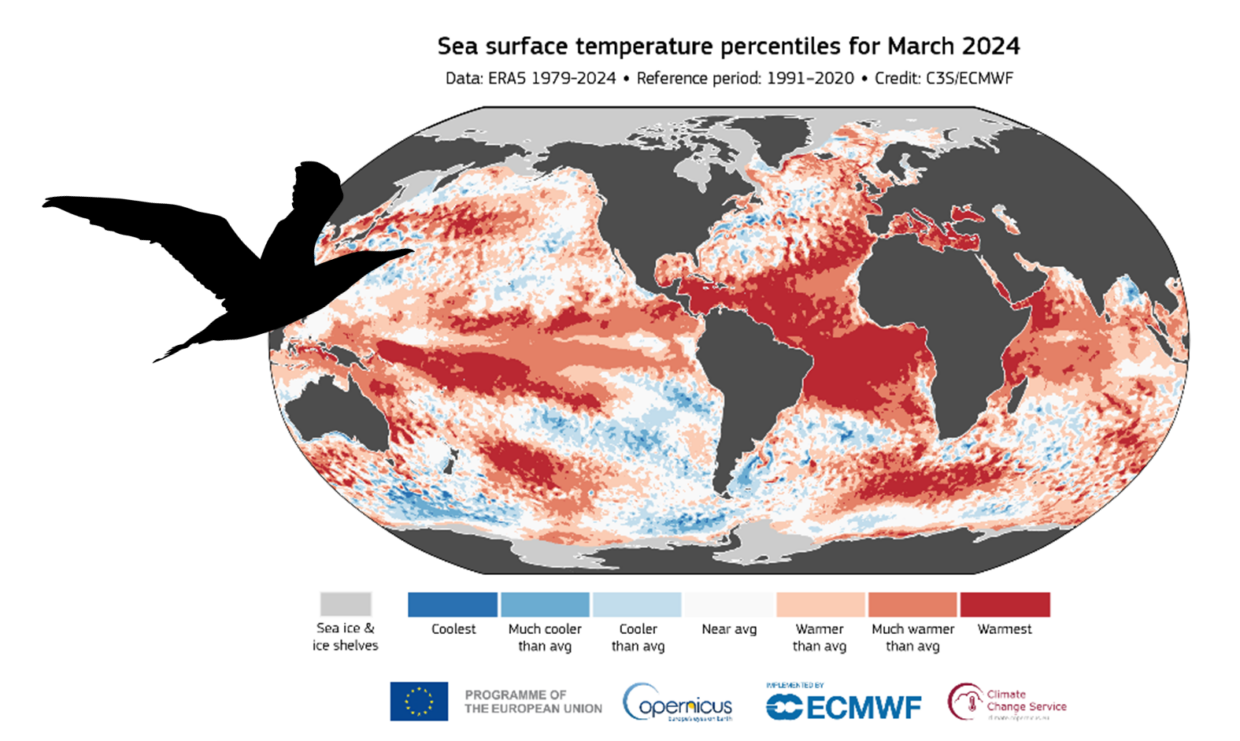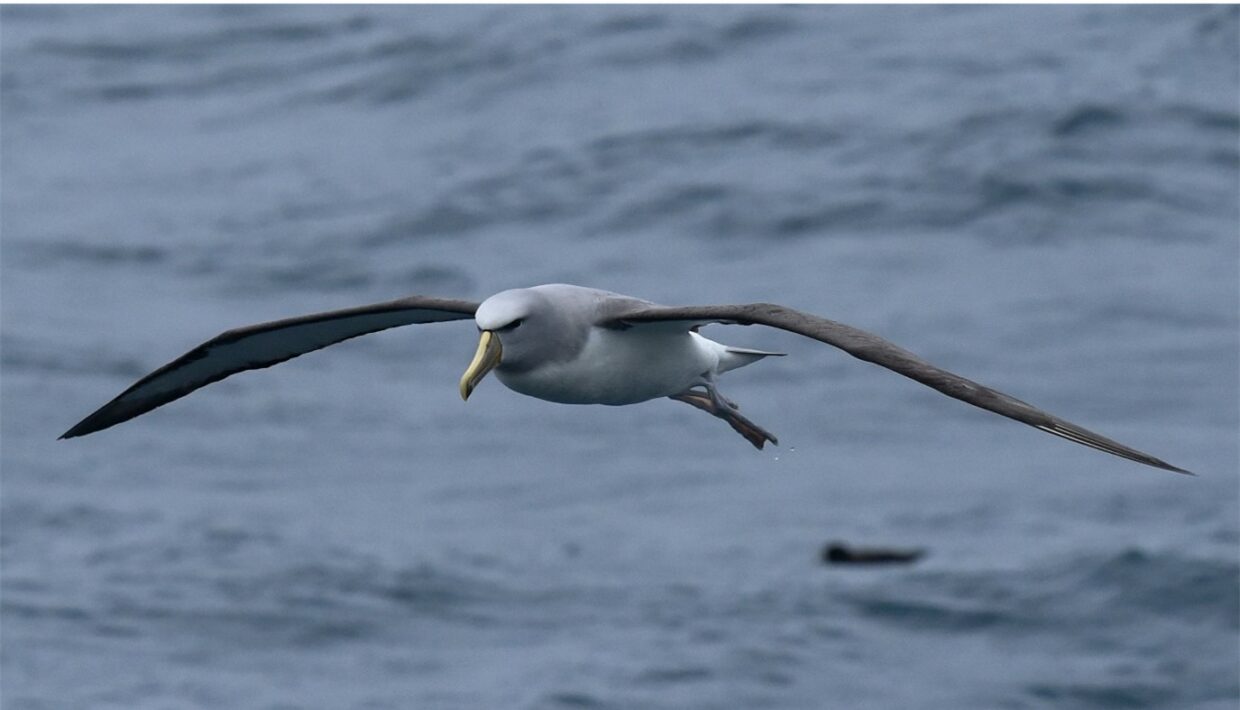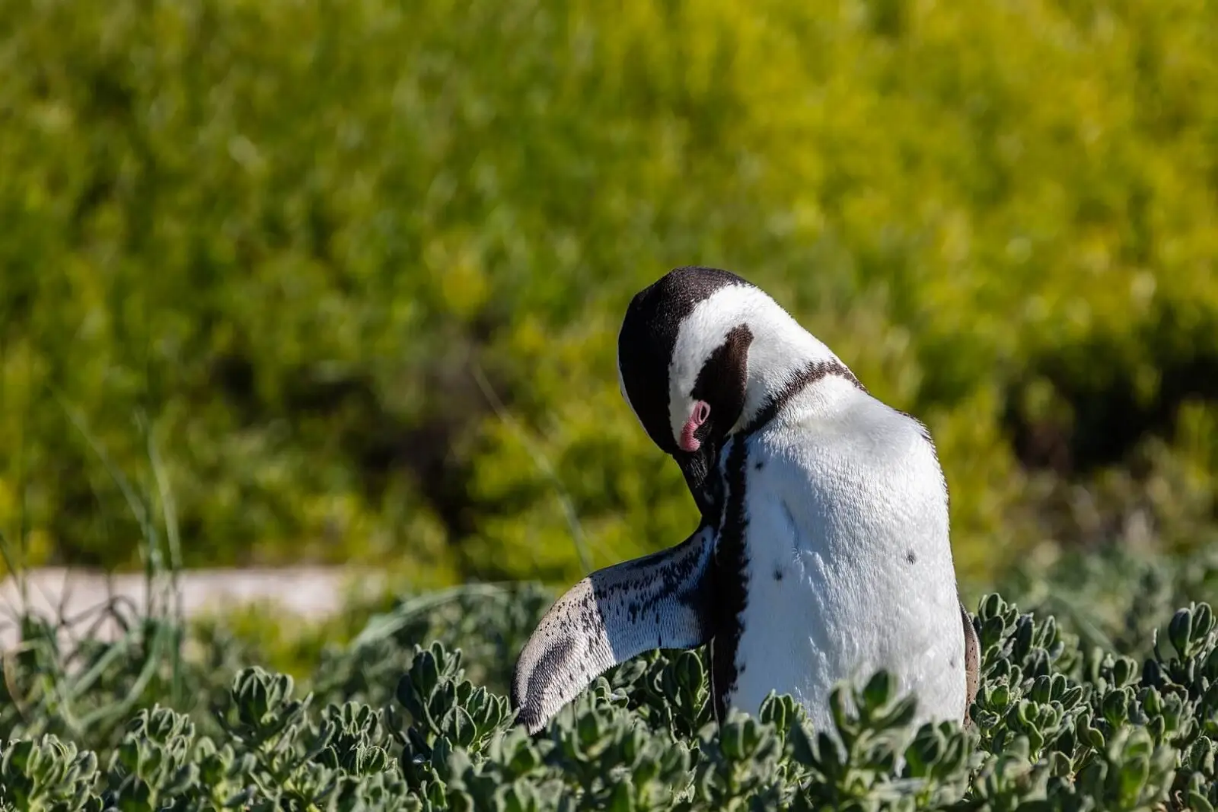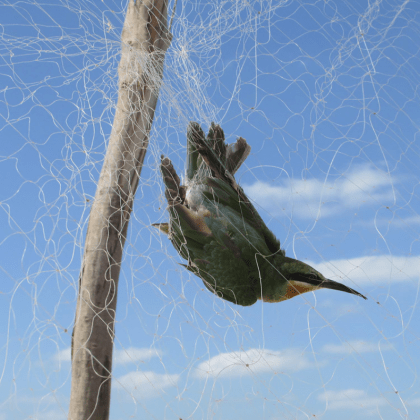Record high sea surface temperatures: a rising threat to seabirds
Global sea surface temperatures are rising and have hit record high values in recent months. This potentially threatens seabirds, their prey and their habitats, both on land and at sea. Despite ongoing efforts to understand how species are affected by this growing threat, more data and interdisciplinary studies are needed to develop adequate conservation strategies. This blog post, and the accompanying collection of Bird Conservation International (BCI) papers, are released on World Seabird Day (3 July 2024) to help raise awareness and encourage further research.
Seabirds are important indicators of marine health, and are currently one of the most threatened groups of birds globally. They face a range of threats both on land and at sea, and consequently many species are declining. Among these threats is the ongoing increase in global sea surface temperature (SST) reported by the Intergovernmental Panel on Climate Change (IPCC) and mainstream media, with the last ten consecutive months (during 2023–2024) having witnessed the highest SST levels on record.

The impact of SST on seabirds has been assessed by a range of species distribution models, with a variety of results. For example, this study found that the probability of occurrence of Salvin’s Albatross Thalassarche salvini (Vulnerable) was negatively affected by high SST values, whereas that of Black Petrel Procellaria parkinsoni (Vulnerable) was affected positively.

Other attempts have not found such clear relationships between SST and seabird distribution patterns, as in these studies on Red-legged Cormorant Poikilocarbo gaimardi (Near Threatened) and Japanese Murrelet Synthliboramphus wumizusume (Vulnerable), although variations may arise when comparing impacts on different colonies and/or different times of year.
There is however growing evidence of other indirect effects of climate change and rising SST on seabirds, piling extra pressure on species that are already threatened by other factors. These effects have been discussed in a range of BCI papers, which are freely available for a limited period as a collection. Some of the negative impacts on seabirds include:
- Shifts in prey distribution or weaker upwelling, affecting their feeding behaviour
- More frequent and stronger storms, affecting their feeding and nesting habitats
- Changes in wind speed or direction, affecting their flight (especially migratory species)

A further concern is that many seabirds are not exposed to one threat at a time, but rather a combination of them. A good example is African Penguin Spheniscus demersus (Endangered), which must deal with reduced prey availability from over-fishing at sea, as well as coping with alterations in breeding habitat and heat stress on land.

Many seabirds, including African Penguin, face threats both on land and at sea.© Diego Dels
Some measures have been taken to try to counter some of these effects, such as providing artificial nests that aim to protect African Penguins from high temperatures. However, more data and analyses combining data from different sources are needed to better understand the impacts of rising SST on seabirds. This is essential to designing effective mitigation and conservation management strategies, especially for species already of conservation concern.

View the full collection of articles here: Sea surface temperatures and seabirds
BCI papers for accompanying collection:
- A review of records and research actions for the poorly known Vanuatu Petrel Pterodroma [cervicalis] occulta (2024, OA)
- Range-wide changes in the North American Tufted Puffin Fratercula cirrhata breeding population over 115 years (2022; OA)
- Nest microclimate and heat stress in African Penguins Spheniscus demersus breeding on Bird Island, South Africa (2022)
- Combining tracking with at-sea surveys to improve occurrence and distribution estimates of two threatened seabirds in Peru (2022)
- At-sea distribution and habitat of breeding Japanese Murrelets Synthliboramphus wumizusume: implications for conservation management (2019)
- Preliminary survival and movement data for a declining population of Flesh-footed Shearwater Ardenna carneipes in Western Australia provides insights into marine threats (2018)
- Nest site selection of South Georgia Diving-petrels Pelecanoides georgicus on Codfish Island, New Zealand: implications for conservation management (2017)
- Long-term population trends of the Red-legged Cormorant Phalacrocorax gaimardi on the Argentine coast (2014)






